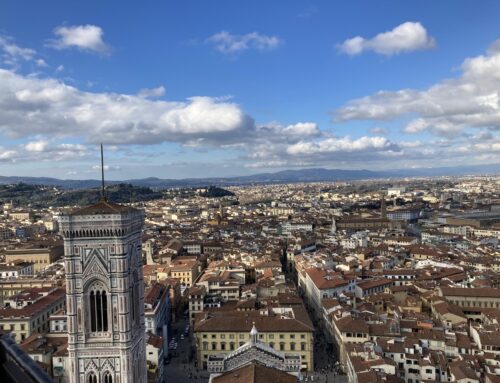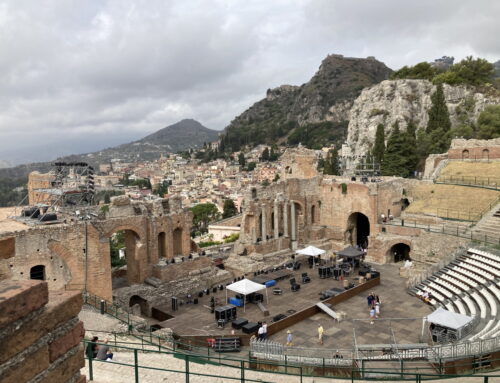Everything you need to know about
traveling to Lombardy in Northern Italy
The Lombardy region should be on the list of any traveler to Italy. Located in Northern Italy, the Lombardy region is home to such destinations as Milan and Lake Como.
Lombardy is also known for its wines, amazing mountain views and some of the most beautiful small towns in all of Italy.
We put this guide together for travelers who have Lombardy on their bucket list for places to visit.
Let’s get to it!
Lombardy Location and Geography
As mentioned, the Lombardy region is located in Northern Italy.
Lombardy is contained within over 9,200 square miles and has a population of just over 10 million people.
Lombardy is bordered by the Piedmont region to the west, Emilia-Romagna region to the south, Trention-Alto Aldige and Veneto regions to the east and Switzerland to the north.
The capital city of Lombardy is Milan, which is located in the western portion of the region. Milan is one of the fashion centers of Italy, and is the main financial center as well.
The population within the city proper is estimated at 1.4 million, while population within the metropolitan city is about 3.2 million.
Overall, the entire Milan metropolitan area is the most populated in all of Italy, with a population estimated at between 5 and 7 million people, depending on which areas are included.

The topography of Lombardy includes a mix of mountains, hills and plains. The Alps form a natural border with Switzerland and they are home to numerous popular ski resort towns such as Bormio and Livigno.
Lombardy is also home to at least portions of the four largest lakes in Italy, including Maggiore, Como, Garda and Iseo. Some of the most spectacular small towns and historic villas in Lombardy are located around these lakes.
The Po River provides much of the border between Lombardy and Emilia-Romagna to the south.
Lombardy Climate
Given the diverse topography, the climate in Lombardy can be quite varied. With that in mind, we’ll focus on Milan to provide a general sense of the climate in Lombardy.
The climate is mainly humid subtropical, and there can be a significant variation between the average high temperatures in the Summer (85 degrees in July) and the average low temperatures in the Winter (about 30 degrees in January).
The lakes located at the foothills of the Alps allow the temperatures to be more mild than what would otherwise be expected. As a result, you will find olives and some citrus grown in these areas.

Precipitation around Milan is steady throughout the year. However, the heaviest amounts of rain occur in Spring and Fall.

While Milan does not receive a tremendous amount of snow on average, the mountainous areas in the Alps in the northern portions of Lombardy can receive a considerable amount of snow.
Around Milan, snowfall averages about 1.5 inches annually in both December and January.
While there is
A brief history of Lombardy
This brief history is taken from the Wikipedia page for Lombardy.
Archaeological findings in the region suggest that areas in Lombardy have been settled for at least 4,000 years. Over time, the region has been occupied by such peoples as the Etruscans, Celts, Gallic tribes and of course the Romans.
After the Fall of Rome, Lombardy fell victim to numerous invasions from various tribes coming primarily out of Germany.

Charlemagne
After 540, the town of Pavia, located south of modern day Milan, became the permanent capital of the Ostrogothic Kingdom. This occurred as a result of the most successful invasion by a Germanic tribe known as the Lombards.
The Lombards long lasting reign gave the name to the region.
Eventually, the Lombards, which had close ties to Bavarian and Frankish royalty, built relationships with Gallo-Roman peoples and the Lombard culture became integrated with the Latin culture.
The end of the Lombard reign in the region arrived with Charlemagne’s conquering of the region in the 8th century. Charlemagne then annexed the Kingdom of Italy into his Holy Roman Empire.
In the 15th century, Milan became one of the centers of the Renaissance as it was home to Leonardo Da Vinci.
Entrepreneurial families in the region extended trade and banking activities into northern Europe. The term “Lombard” became synonymous with these people, and even resulted in the naming of such places as Lombard Street in London.
Eventually, all of northern Italy was referred to as Lombardy.
The wealth that accumulated in the region during the Renaissance then attracted the more organized armies of France and Austria, who fought for control Lombardy in the 15th and 16th centuries.
Eventually, the region fell under the rule of the Habsburgs of Spain, then the Austrians. After a period of neglect in the 17th and early 18th centuries, Napoleon arrived, and the Kingdom of Italy became a puppet state of France under Napoleon.
After Napoleon’s defeat, Lombardy again fell under Austrian rule, which ended when Lombardy was annexed into the Kingdom of Italy.
Lombardy is now one of the 20 administrative regions of Italy.
What you should know before you go to Lombardy
Here is some information that you should have before traveling to Lombardy, from the obvious to the not-so-obvious.
Currency: Euro
Language: Italian of course. While English is spoken in many of the popular tourist areas of Lombardy, you will find less English spoken in many of the smaller towns. We highly recommend that you learn some Italian before you go. Many Italians will appreciate the effort. Rosetta Stone is a popular app for learning Italian.
Visa Requirements: For stays under 90 days, you do not need a Visa, but you will need your passport.
Electricity: Europe has different electrical outlets than what we have here in the US, so you will need an adapter.
Car Rentals: Unless you only intend to stay in and around Milan, the best way to get around Tuscany is by car. However, driving through the cities and small towns themselves can be tricky. Therefore, if you do intend to rent a car, you will want to be sure your accommodations have parking on site, and are close to public transportation, or close to primary sites you want to see. You’ll need an international driver permit along with your driver’s license. If you do not have an international driver’s permit, head on over to your nearest AAA office.
For finding the best deals on rental cars, check out Discover Cars.
Flying to Lombardy: The Lombardy region is home to several international airports. The primary airport is Milan Malpensa airport, located about 25 miles northwest of downtown Milan. When flying from the US and major cities in Europe, this is your best option.
However, if cost is a concern, you can find cheaper flight alternatives here. You can also check out our tips for flying to Italy.
If you don’t intend to rent a car, and need transportation to, check out Kiwi Taxis.
The Trains: A great way to get around Lombardy between the major towns, such as Milan, Como, Bergamo and Brescia, is by train. This is also a great way to get to other major cities in Italy that are just a couple hours away. The train between Milan and Florence takes about two hours.
Travel Insurance: Anytime you plan on a trip overseas, you should consider purchasing travel insurance. Travel insurance can cover the cost of medical emergencies, lost baggage, unexpected trip cancellations, etc.
Travel Insurance Master can help you find the coverage you need for your trip.
When is the best time to go to Lombardy?
In general, the best time to go to Lombardy is April through October, when the weather is most favorable. Of course, if your plan is to go skiing, then the Winter months will be your best bet.
Milan is generally going to be crowded throughout the year, so you may as well go when the weather is nice.
The summer crowds will be heavy in the towns around Lakes Maggiore, Como and Garda, so you may want to visit them during the shoulder months of April, May, September and October.
The Lombardy region is somewhat popular with golfers in Italy and Europe, and the conditions will be good from late April through October.
Major destinations in Lombardy

Milan
Any trip to Lombardy must start with Milan. Milan is effectively the culture center of Northern Italy, and offers plenty to see and do.
Shoppers will thoroughly enjoy the shopping district in Milan, as well as its historic sites, including the Milan Cathedral.
After you’ve spent a couple days exploring Milan, it’s time to head to the Northern Lakes.
The Northern Lake region of Italy is simply one of the most beautiful places in Europe to visit. This is why it attracts travelers far and wide, including the rich and famous, some of whom have vacation homes in the area.
The primary attractions of these lakes include the beautiful small towns lining the lake shores; the stunning villas; water sports; and just the scenery.
Lake Como is located north of Milan and is about a 45 minute drive from Milan Malpensa Airport and an hour drive from downtown Milan.

Bellagio Lake Como
Como, Bellagio and Varenna are among the more popular towns to visit on Lake Como.
To the west of Lake Como is Lake Maggiore and in between is the town of Varese, a worthwhile stop known for its castles and villas.
Lakes Iseo and Garda are then located to the east.
In between Lake Como and Lake Garda are the cities of Bergamo and Brescia. Both cities are home to UNESCO World Heritage sites.
Lombardy and neighboring Piedmont are the two most popular regions in Italy for golf.
While not known as a golf destination globally, Italy recently hosted the Ryder Cup. Lombardy is home to several of the best courses to play in Italy and all of Europe.
Lastly, as mentioned earlier, the region is also known for its winemaking, and there are a number of wineries to visit, from the lake region to the south of Milan.





